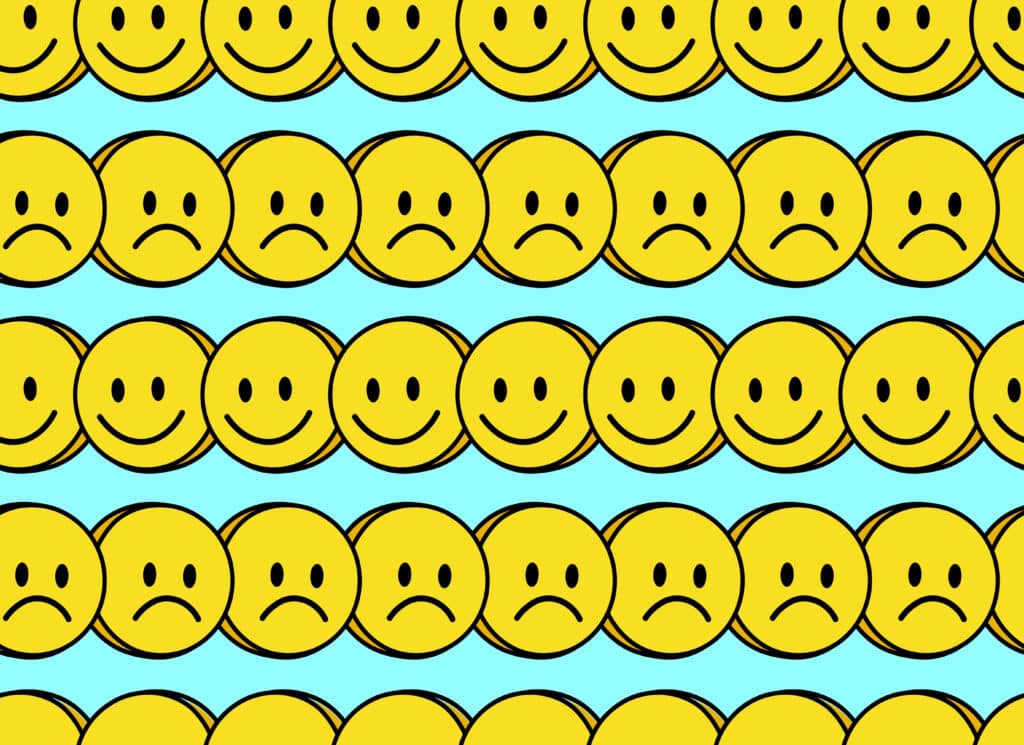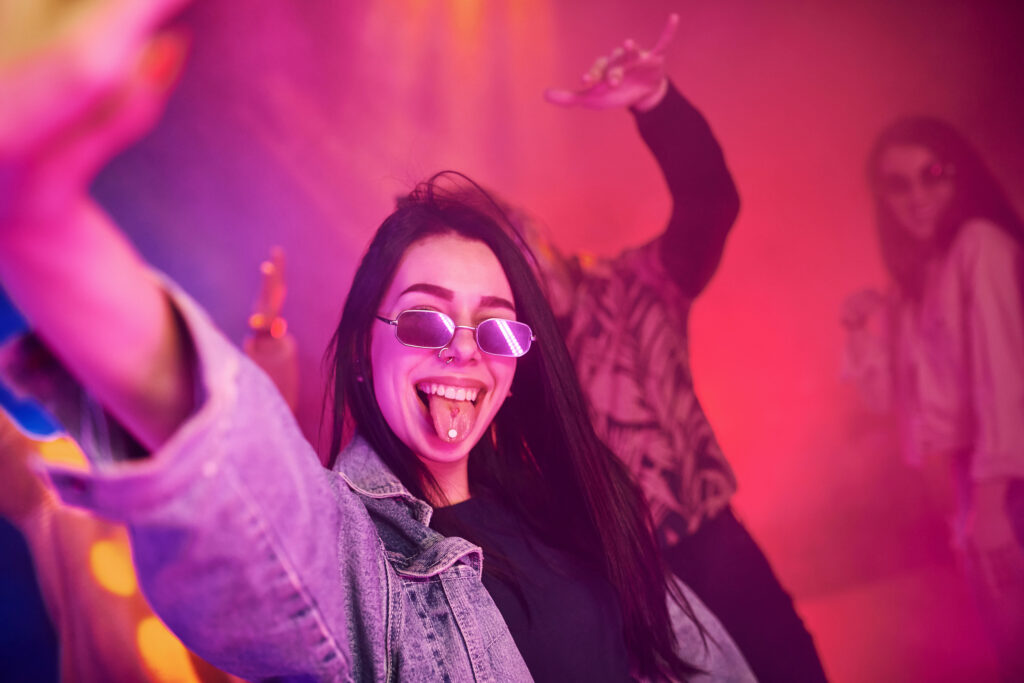The big topic these days, is how hallucinogens can treat things like fear responses. But what happens when a person on hallucinogens, experiences intense fear while tripping?
Am I talking about a bad trip?
No, I am not. I’m not talking about taking a hallucinogen, like a psychedelic, and having a standard bad trip. A bad trip is an experience of anxiety that takes place while on a psychedelic. The term is mainly associated with psychedelics, but it can apply to other drugs. It can even simply mean having a bad time on a drug.
Psychedelics, specifically, are known for creating a large increase in serotonin levels; and this is something that can increase anxiety in some people. This is not the for-sure cause of every bad trip; but it likely plays a role in many. Bad trips are associated with chills, feeling nauseous or throwing up, elevated heart rate, and other general symptoms of anxiety or panic; because that’s essentially what they are.
It’s often spoken about how important the ‘set and setting’ are for using psychedelics; or any drug that causes a large or significant psychoactive response. The set and setting (where you are and what’s going on around you) play into a person’s comfort level. The idea is that the more comfortable a person is, the less likely they are to have an anxious response. However, when the anxious response comes from taking too much, or the user having something like an anxiety disorder; moderating for set and setting, might not be enough.
While being in the right set and setting might not stop a bad trip; the goal is to control for as many environmental factors as possible, to create as positive an experience as possible. And this might be important beyond having a good time. For example, research into ketamine shows that those who have an anxious response, are also less likely to gain benefits. Could a bad trip on other hallucinogens also mean less benefit? And what if the trip is downright brutal? Could it cause harm?
Hallucinogens and fear in recent terror attack
First and foremost when getting into this, I don’t take sides on wars. They’re bad for everyone involved; and there is rarely an actual ‘right’ and ‘wrong’ side. Usually its bad leadership and political issues; especially when these things happen repeatedly. The people on the ground suffer; and that’s a general aspect of nearly any war. The people suffer, all of them. So it matters little which side a person is on; when there’s war, people suffer.
The current upheaval in the Middle East started as an attack on concert-goers at the Supernova Universo Parallelo Festival in the Negev desert; a few miles from the border with Gaza. About 3,000-4,000 people attended this trance festival; which was meant to last 15 hours. The attack by Hamas started early in the morning on October 7th, went on for several hours; and included firing into crowds, blocking off roads, and going after those fleeing the scene. Upwards of 260 were killed, with countless more kidnapped, or injured.
This was a horrible occurrence, but why am I mentioning it here? Because of the question of what happens to people on hallucinogens, who experience extreme fear while tripping. This attack happened at a music festival, where the likelihood of hallucinogen use, was very high. No, I cannot give a number of people tripping that day; but I’ve been to enough concerts of this type, to know it could have been as many as 30%.
In fact, it could be more, it could be less. Not everyone does these drugs; but for those who do, this would’ve been the time. However, plenty of people frequent music festivals, without doing hallucinogens, and plenty don’t do drugs at all. I do feel it’s safe to say that users were likely in the triple to quadruple digits.
The reality of any occurrence like the attack, is that its going to cause immense fear; and not just in the moment. Many of those who lived through this, will have issues in the months and years to come, like PTSD. Some people will bounce back more easily; some will have a more difficult time. These are realities of the human psyche and how we deal with extreme stress and fear.

While this brings up a million much more relevant questions; it also brings up the question of how those who were actively tripping, fair in comparison to those who were not. Could it be the drugs afforded some amount of mental protection? Or could they have created an even worse experience that was compounded by their use?
This is the same question we can ask of anyone who undergoes a major stress or fear event while tripping on hallucinogens. Like getting high and getting raped, or getting into an awful car accident. This attack represents an event where a large percentage would’ve been tripping; so its not just about one or two people going through this experience; but hundreds, if not more.
Are there answers to this question?
There are not. The ketamine research into anxious responses tells us it could be counterproductive in terms of benefits, to feel fear and anxiety while high. But then, people almost never talk about ayahuasca as a fun experience, and yet many gain benefits. It should be noted that simply feeling anxious, or having a not-so-fun experience; are not great comparisons to undergoing something extremely horrible while high, like a full on attack. So while general stress might make it difficult for a positive effect on some hallucinogens; this doesn’t answer the question of what happens when there’s full-out fear.
The more concerning aspect, is that it could cause further damage. We look to psychedelics, and hallucinogens in general, as a way to heal the brain from anxiety and fear based illnesses. But we can’t know if having an intensely bad experience on them; therefore works the opposite way. What if a bad experience also changes our brain by instituting negative neural pathways?
It could be that those who were high on hallucinogens during this attack, will have no different long-term results than anyone else, from the extreme violence and fear. And maybe those results will be more relevant to the individual, than to the drug an individual was on. For now it remains a question; and one that should get more attention as these therapies grow in popularity.
Lets hope it had more of a positive result than negative; for whatever that means in a situation like this. Let’s hope that at the very least, the drugs meant to open minds; didn’t cause more damage to those who were on them. It certainly won’t change what happened; but let’s hope those who were simply trying to catch a peaceful high, don’t have to live with heightened issues in the future, because of the combination of drugs and fear.

Looking ahead
That this question exists at all, shows the lack of knowledge we have all together. Sure, we know a lot, and knowledge is constantly expanding; but we don’t have all the answers. It’s great to see psychedelics help with fear responses like PTSD; but that does not tell us if they can also help create such fear responses, in the right situation.
And if they do… what does that say about the possibility of a bad trip having lasting effects? We generally think of bad trips as something not pleasant that will fade out into normalcy, when the drug wears off; and this could be true, all of the time. Or it could be true most of the time, or some of the time. Perhaps there is a connection between extreme bad experiences while high, and the creation of more intense damage than what already existed. In the end, we just don’t know. I expect we’ll see more research into this idea in the future.
Conclusion
Perhaps as time goes on, some will talk about their personal experiences of the attack, how they handled fear, and how they fared in general while on hallucinogens. For now, the goal is to minimize damage on both sides; and put an end to the devastation.
Welcome readers; we appreciate you joining in at Cannadelics.com; an independent site for cutting-edge news reporting on cannabis, hallucinogens, and well beyond. Come around regularly to stay in-the-loop; and get subscribed to the Cannadelics Weekly Newsletter; to ensure you’re always on top of what’s going on.





